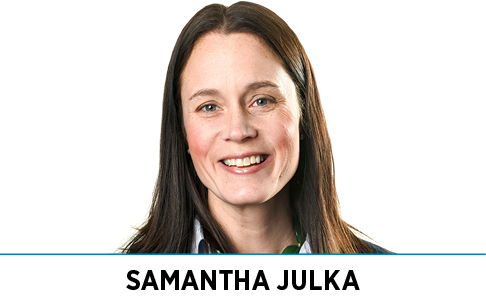Subscriber Benefit
As a subscriber you can listen to articles at work, in the car, or while you work out. Subscribe Now It sounds like the beginning of a great joke: A design researcher walks into a dinner party … . Although I am a design researcher, these days—with three kids under 5—it’s mostly birthday parties for their classmates on a Sunday afternoon, not dinner parties.
It sounds like the beginning of a great joke: A design researcher walks into a dinner party … . Although I am a design researcher, these days—with three kids under 5—it’s mostly birthday parties for their classmates on a Sunday afternoon, not dinner parties.
However, whether a classy dinner or birthday party for a preschooler, the inevitable question arises: “So what do you do for work?” Here is where I take a deep breath and try to decide if I should try to explain what I do or lie and say I’m an accountant.
Nothing against accountants. It’s just that people generally understand what they do. When I say I’m a design researcher who specializes in physical space, I get a lot of follow-up questions, and the first one usually is, “Well, what trends do you see in your research?”
Because our work is unique and specific to each client, I try on the fly to think of our findings from the last few projects. After being a bit stumped by this question a few times, I decided to take a Sunday afternoon off from birthday parties and review all of the challenges we’ve discovered from our last year of investigating workplaces and empowering organizations to create ideal spaces for their people.
Here’s what we’ve found:
Layout. People aren’t near the right things—mostly, the right people. This is pretty simple, right? This gal needs to be by that guy to work efficiently, so why not put them together? Of course, it’s not always that simple. Who needs to be near whom can change by the month, week or even hour. And then what happens when someone new is hired? Or someone leaves? It’s a puzzle with constantly moving pieces, and the people trying to figure it out always seem to be behind. Someday, maybe, we will figure out how to give people the agency to self-arrange better.
Meeting spaces. If people are never near the right people, then of course they call a lot of meetings. Unfortunately, we only update our office spaces about once every 10 years—and often less than that. As workplaces become more collaborative each year, meeting spaces can’t keep pace with what folks need. Most of the time, they are too large and lack the correct amenities, like working technology.
Breakroom. If your office hasn’t been updated in a while, the idea of attaching the word “break” to any room in the building might be laughable. Generally, the people we interview can’t quite understand why their organization even has a breakroom at all. It almost frustrates them more that there is a really crappy, underutilized breakroom than if one didn’t exist. We often see breakrooms in the most distant, windowless areas with the lowest-budget furniture and finishes available. The company might as well hang a sign on the wall that says, “We don’t care about you. Get back to work!”
Look and feel. We’re talking about ambiance, décor and general aesthetic of the space. One of the most common words we hear related to these is “outdated.” People don’t need to show up to a workplace with gold-plated file cabinets—although maybe that’s back in. What does Beyoncé have in her office? Anyway, people notice when we are still holding onto burgundy chairs from the early ’90s with wear patterns that turn the fabric a dirty gray. It’s a challenge to think current, innovative thoughts in a space that feels like it’s one step away from reverting back to fax machines.
Privacy. As researchers, we can never quite figure out what folks are doing that requires so much privacy, but boy do they want it! Someone could be reading emails in Latin and still be highly concerned about co-workers can see. In my humble opinion, this comes up so frequently because many organizations have cultures that foster a lack of trust or a lack of confidence. People also want privacy due to an inability to focus in an ever more collaborative work environment. Of course, this is all interconnected with other challenges, especially ineffective meeting spaces.
So the next time you see me doing some quick mental calculus while my kids smear icing on their faces, know this is some of what’s running through my mind. When you respond confidently that your workplace doesn’t experience any of these challenges, I’ll respond with a high five. And if you feel a sense of familiarity related to any of these, know there are design researchers out here ready to help.•
__________
Julka is founder of Indianapolis-based DORIS Research, which uses design thinking to organize workspaces.
Please enable JavaScript to view this content.
